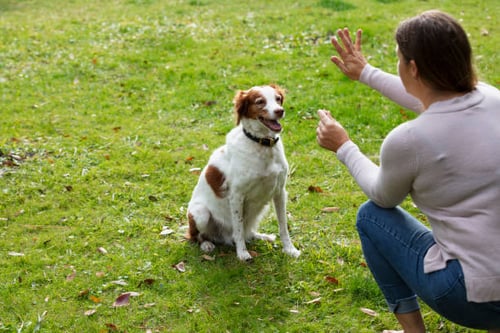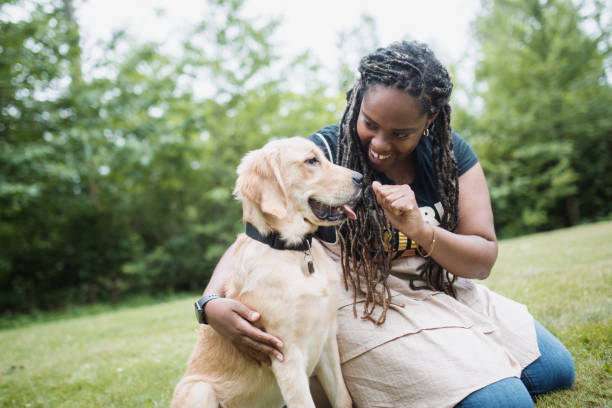For centuries, humans have sought to train their canine companions to obey commands, perform tricks, or behave in particular ways. Yet, as our understanding of animal behavior has evolved, so too have our training methods. In recent years, there has been a growing emphasis on positive reinforcement training. But what's the science behind it, and why is it so effective for our furry friends?
What is Positive Reinforcement?

At its core, positive reinforcement involves adding something positive (like a treat or praise) after a behavior, making it more likely that the behavior will be repeated in the future. For example, if your dog sits on command and you give them a treat immediately after, they are more likely to sit the next time you ask.
The Science Behind It
Operant Conditioning: B.F. Skinner, a renowned behaviorist, popularized the idea of operant conditioning. This theory states that behaviors can be strengthened or weakened based on their consequences. Positive reinforcement is one of the four quadrants of operant conditioning, and it's all about strengthening a behavior by adding something pleasant.
Neurochemical Response: When dogs receive a treat or praise, their brains release dopamine, a neurotransmitter associated with pleasure, reward, and motivation. Over time, the behavior that leads to this pleasurable outcome becomes more ingrained, thanks to these neurochemical pathways.
Building Trust and Confidence: Positive reinforcement not only trains a specific behavior but also fosters a deeper bond between the pet and the owner. Dogs trained with positive methods tend to be more trusting and less fearful. In contrast, punitive methods can lead to anxiety, distrust, and potential aggression.
Benefits of Positive Reinforcement Training
 Long-Lasting Learning: Dogs trained with positive reinforcement tend to retain learned behaviors for longer. The association between the behavior and the reward is strong and doesn't diminish as quickly as fear-based responses.
Long-Lasting Learning: Dogs trained with positive reinforcement tend to retain learned behaviors for longer. The association between the behavior and the reward is strong and doesn't diminish as quickly as fear-based responses.
Improved Dog-Owner Relationship: The positive experiences shared during training sessions enhance the bond between dogs and their humans. This mutual respect and understanding lead to a harmonious living environment.
Flexibility: This method allows trainers to adapt and use various rewards, from treats to toys to praises. This flexibility ensures that training remains engaging and effective for every individual dog.
Safety and Well-being: Positive reinforcement eliminates the need for aversive techniques, which can be harmful or even dangerous. It ensures that the dog's physical and emotional well-being is prioritized.
Putting it into Practice
Timing is Key: For positive reinforcement to be effective, the reward must be given immediately after the desired behavior. This helps the dog make a clear connection between the action and the positive outcome.
Consistency: Consistency in training is crucial. Ensure that all family members and caregivers are on the same page regarding commands and rewards.
Start Simple: Begin with easy commands like 'sit' or 'stay' to build confidence before moving to more complex behaviors.
Know Your Dog: Every dog is unique. Find out what motivates your dog the most – is it a particular treat, a favorite toy, or simple praise?
The science behind positive reinforcement dog training is robust, backed by decades of research and practical application. It is not only effective in training dogs but also ensures that the process is enjoyable and enriching for both the dog and the trainer. As we understand more about our canine companions, it becomes evident that positive methods align with their natural instincts and pave the way for a loving, trusting relationship.
Subscribe to the Gingr Blog






